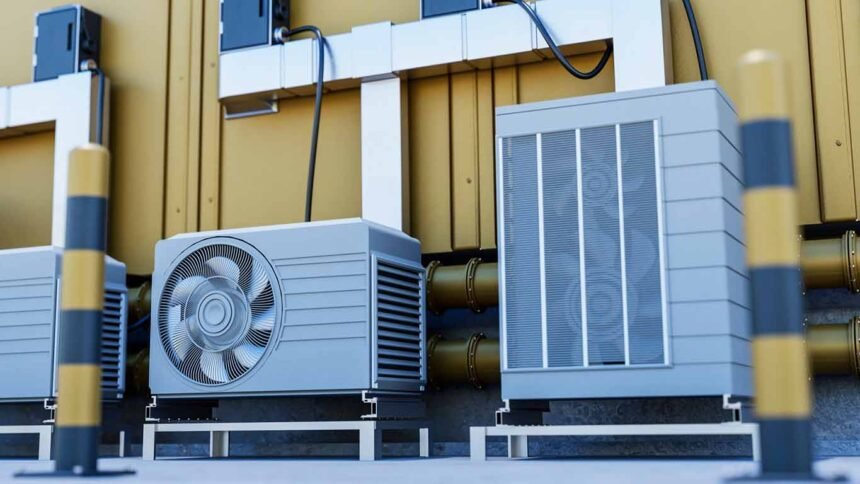The modern world experiences rapid development of climate control systems. Advanced cooling technologies function as the main drivers in this evolving industry. The solutions provide smart operation alongside efficient performance and sustainable operation.
Energy efficiency together with environmental impact remains limited in conventional systems. Modern cooling systems actively deal with existing operational limitations. The systems combine high-tech materials with intelligent technology and sustainable designs.
This article analyzes what differentiates these innovative cooling systems from others. A study will reveal their distinct characteristics along with the advantages and upcoming prospects. This article unveils the impact of modern cooling systems on indoor climate control methods.
Energy Efficiency: The Core Of Modern Cooling Systems

The main priority of innovative cooling technologies focuses on achieving energy efficiency. Large amounts of electricity flow through regular cooling systems. Higher electricity expenses along with increased carbon emissions become a result of this approach.
Advanced compressors joined with inverters are what modern systems incorporate to function. The system components adjust cooling output directly in response to real-time indications for performance demands. They reduce energy waste significantly.
Reliable cooling systems integrate renewable power generation by using solar energy as well as other renewable sources. These systems prove to be more environmentally friendly and economical for users. Modern energy-efficient system implementation meets all current environmental standards.
Through their dual benefits users remarkably reduce their expenses while preserving the environment. Such dual advantages make electricity-powered heating and cooling devices very popular among homes and businesses.
Smart Technology Integration: The Future Of Climate Control
Cooling technology receives transformation through the application of smart technology innovations. Contemporary cooling systems incorporate Internet of Things devices and sensors because of their modern capabilities.
Real-time monitoring occurs through tools which track temperature humidity as well as air quality conditions. The application enables users to control their systems using smartphones alongside voice assistant applications.
Thermostat devices automatically absorb user behavior patterns as they track each usage experience. These devices automatically modify their operations to ensure maximum efficiency and comfort. Predictive components have started to appear within some cooling system architectures.
System breakdowns become avoidable and the total system lifespan increases due to real-time monitoring. The implementation of smart integration systems creates improved capabilities. The system enables cooling systems to work exclusively during required periods. The combination between convenience and efficiency distinguishes innovative systems from others.
Eco-Friendly Refrigerants: A Greener Approach To Cooling
Standard cooling systems incorporate dangerous refrigerants for operations. Such substances cause both ozone layer destruction and planetary heat increase.
Modern cooling systems deploy environmentally safe refrigerants for their operations. The alternative cooling technologies create less strain on the environment. They are non-toxic and non-flammable.
The technology meets the requirements established by the Kigali Amendment. Such international agreement seeks to lower emissions of greenhouse gases across the planet.
Using environment-friendly refrigerants results in better system operational effectiveness. Such systems improve both energy consumption efficiency and operational expenses.
Advanced Air Purification: Beyond Temperature Control
Modern cooling systems achieve tasks superior to basic temperature regulation. The advanced cooling technologies enhances the quality of air inside buildings. Contemporary cooling systems implement advanced filtration systems as part of their modern features.
The system contains features that extract dust together with allergens and airborne contaminants. Cooling systems implement two main filtration methods with UV-C light together with HEPA filters to capture pollutants.
The tools utilize effective methods to kill bacteria and viruses in the air. Better health as well as well-being result from cleaner air. The system lowers the likelihood of developing respiratory problems together with allergic symptoms.
Premodern air purification systems make environments feel more comfortable for users. The indoor atmosphere becomes fresher with better indoor comfort as a result.
Conclusion
Modern indoor climate management undergoes a fundamental change through innovative cooling system advances. Their building practices serve three crucial priorities: they focus on low energy usage together with intelligent systems integration and sustainable environmental operations.
Advanced air purification systems along with sleek features raise their overall value. These systems establish a method for complete climate management. Modern living requirements get fulfilled by these systems which simultaneously resolve environmental issues.
Modern technology will improve future cooling systems further. These systems create new performance standards in comfort combined with sustainable and efficient practices.







